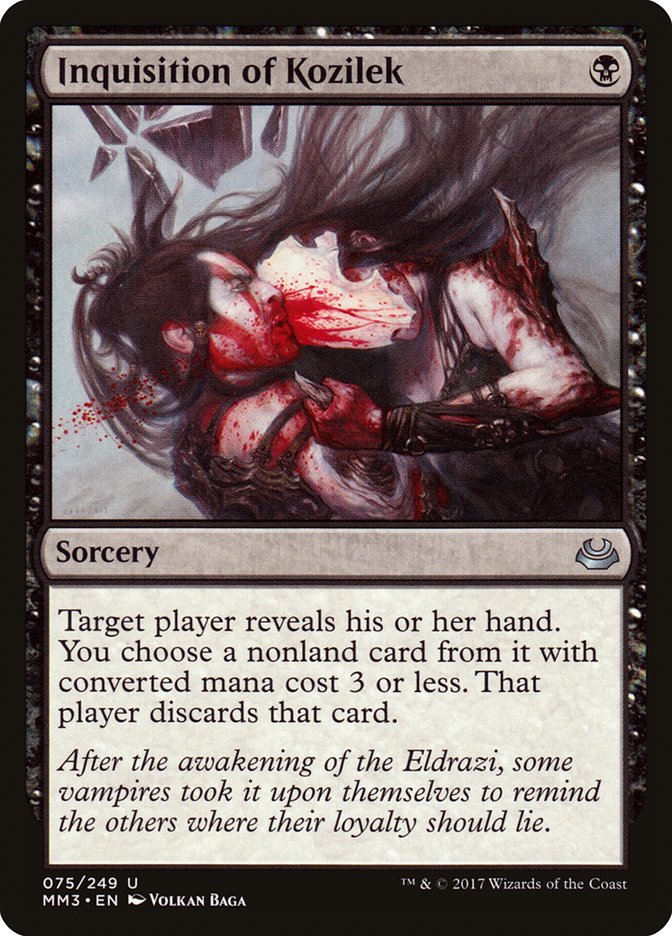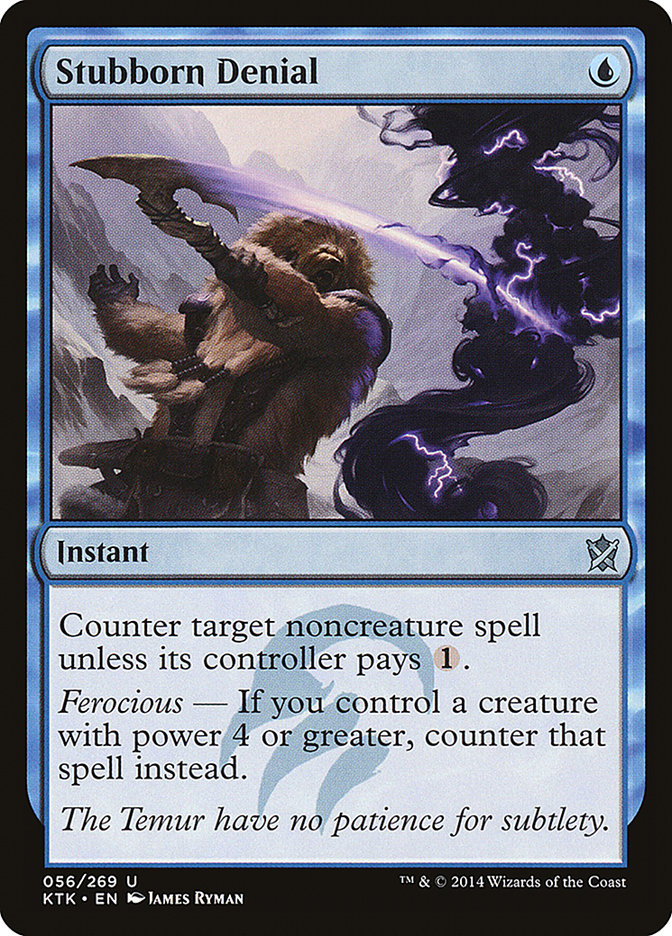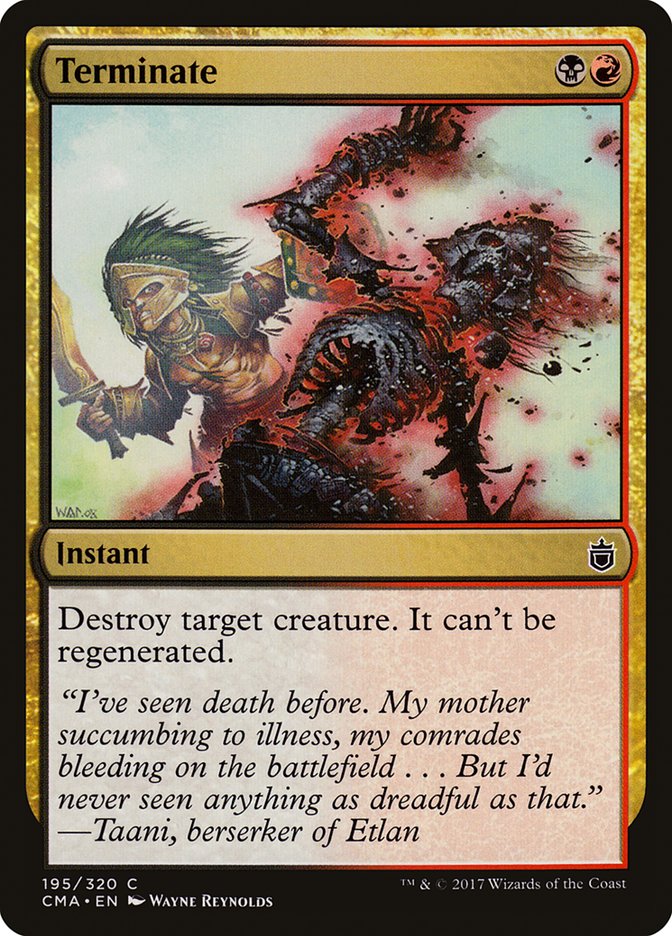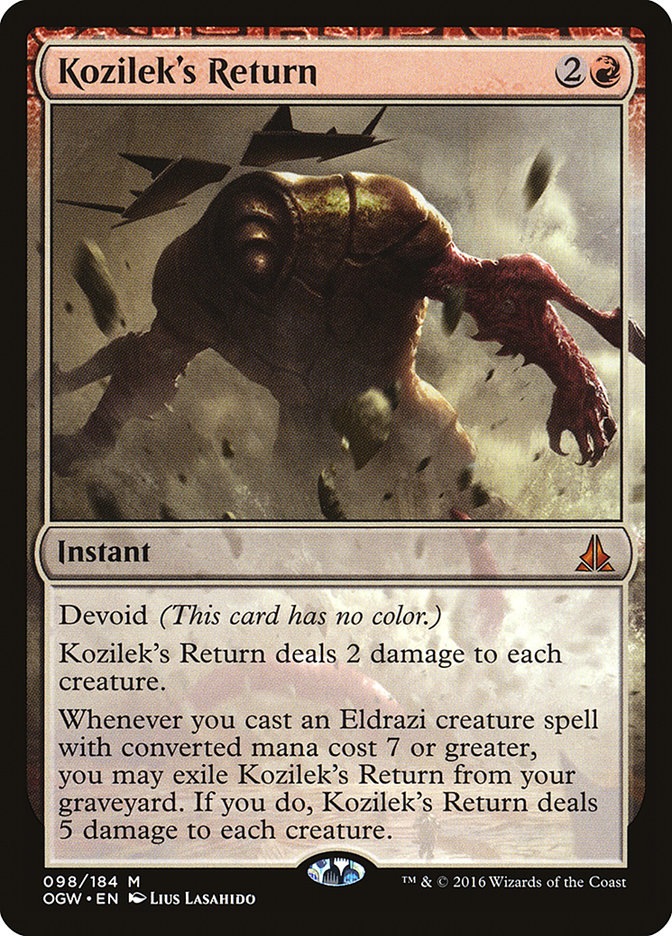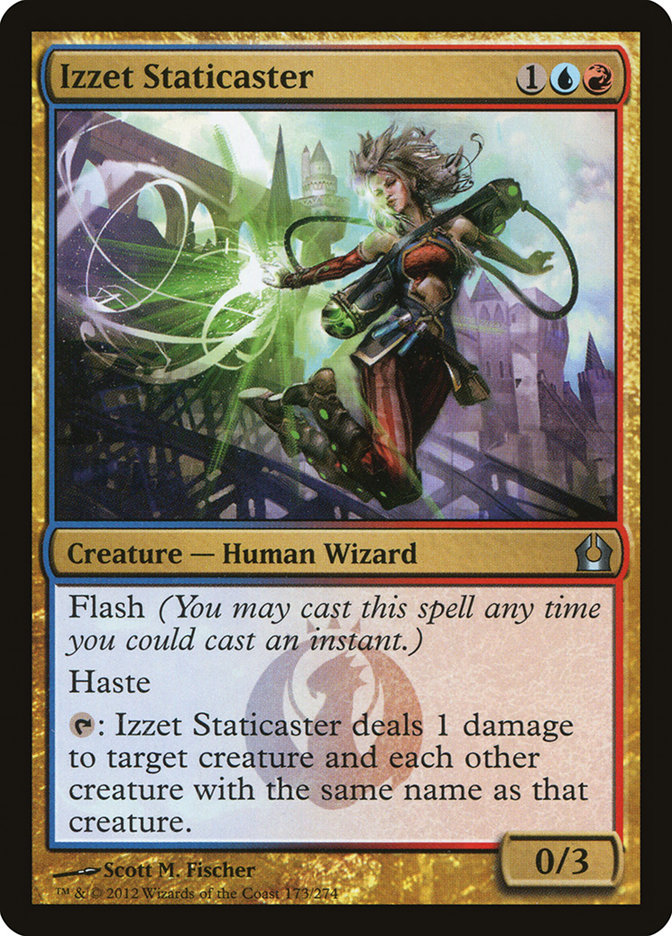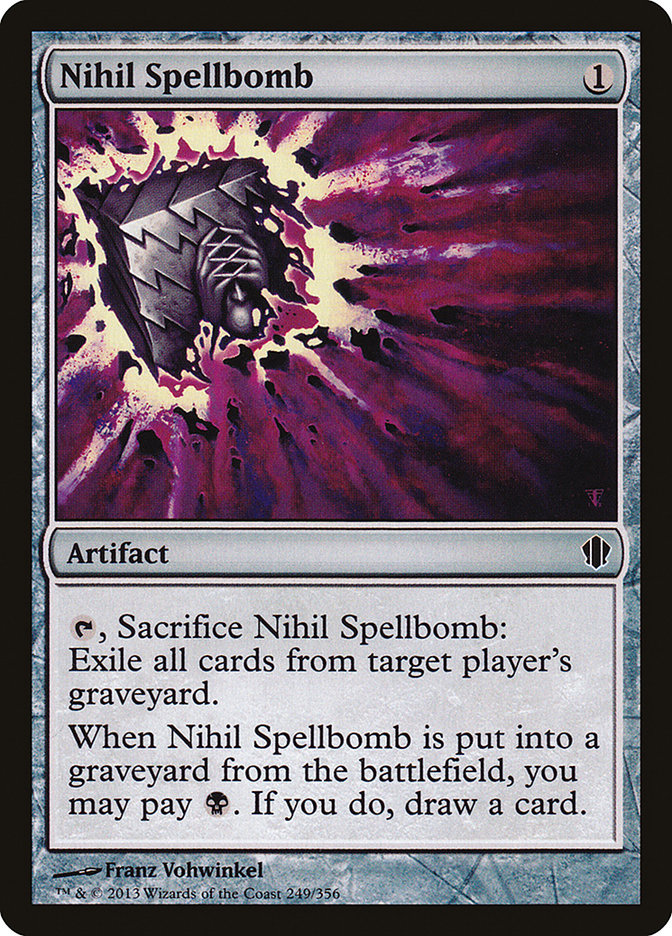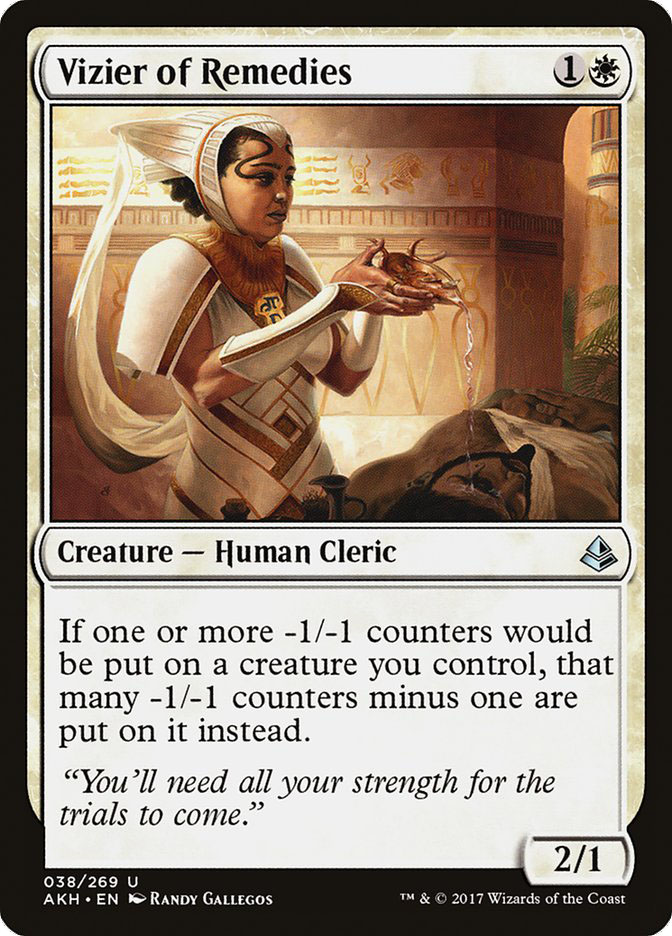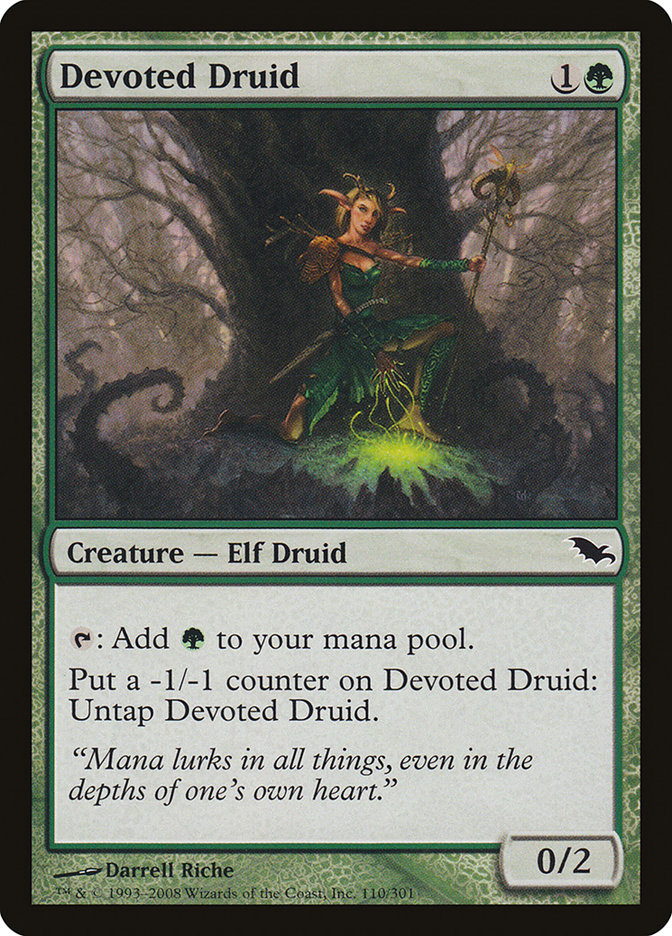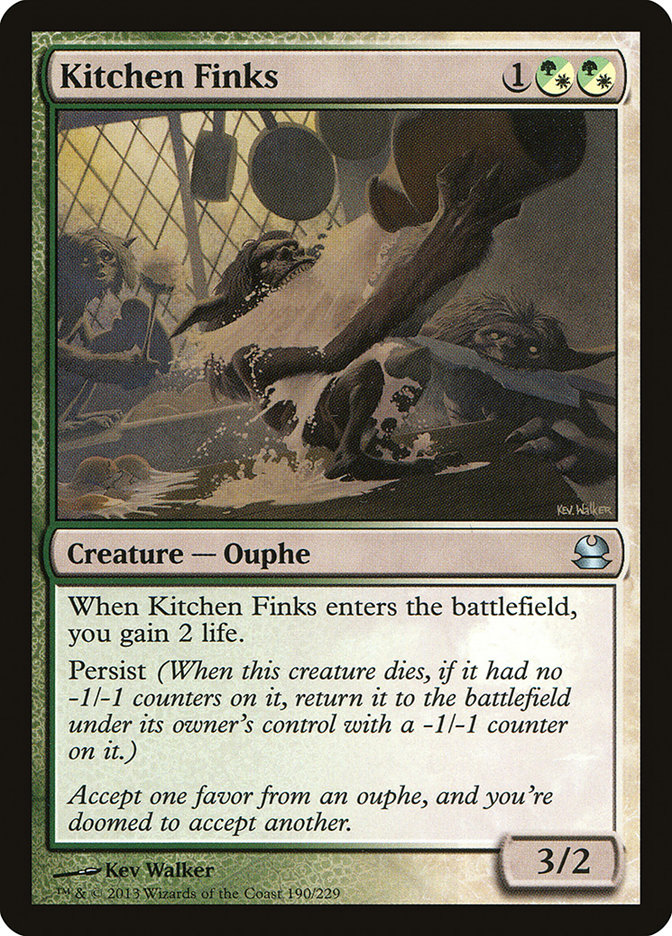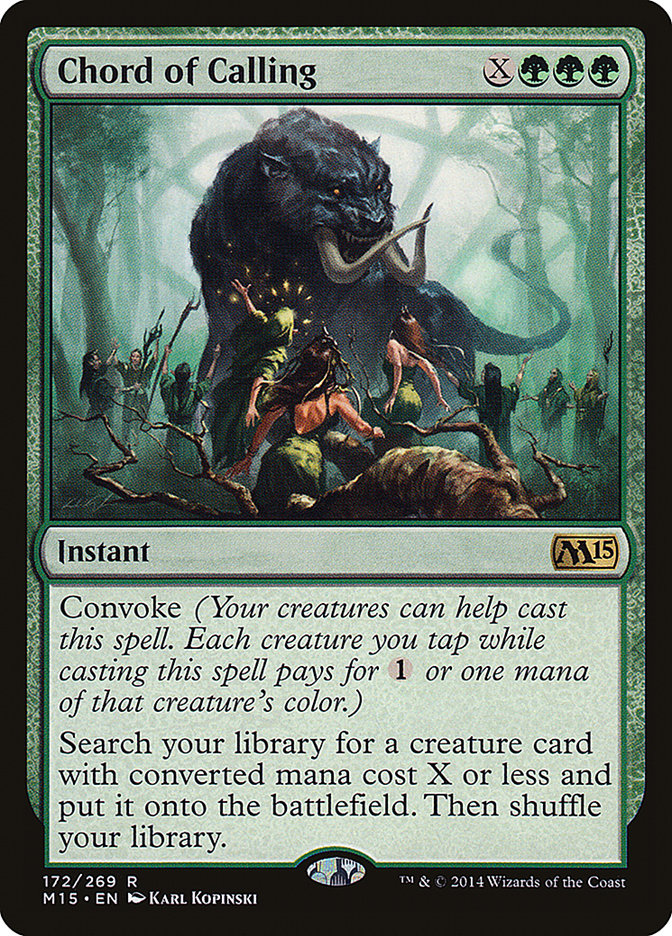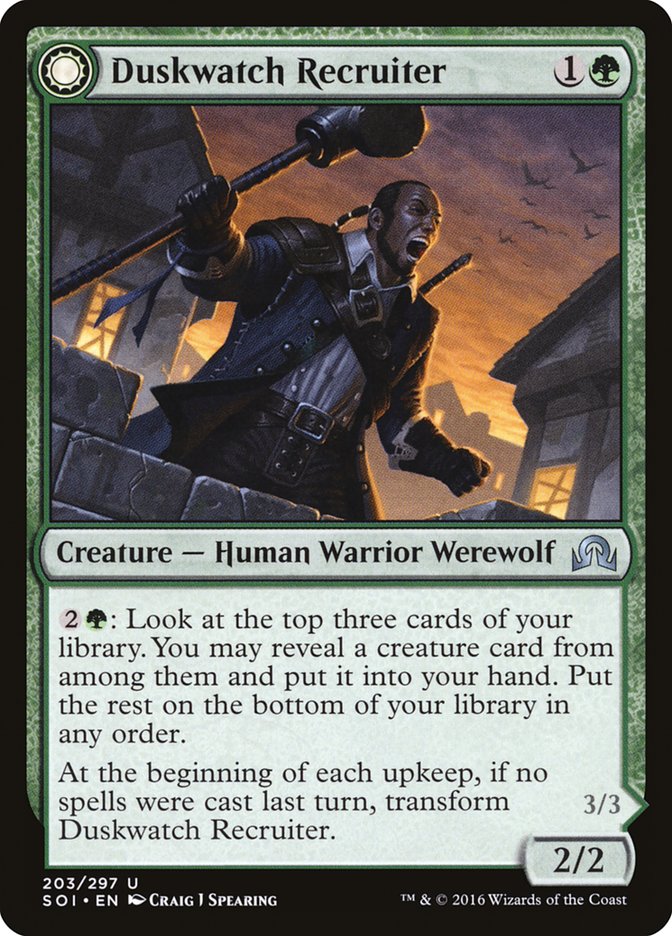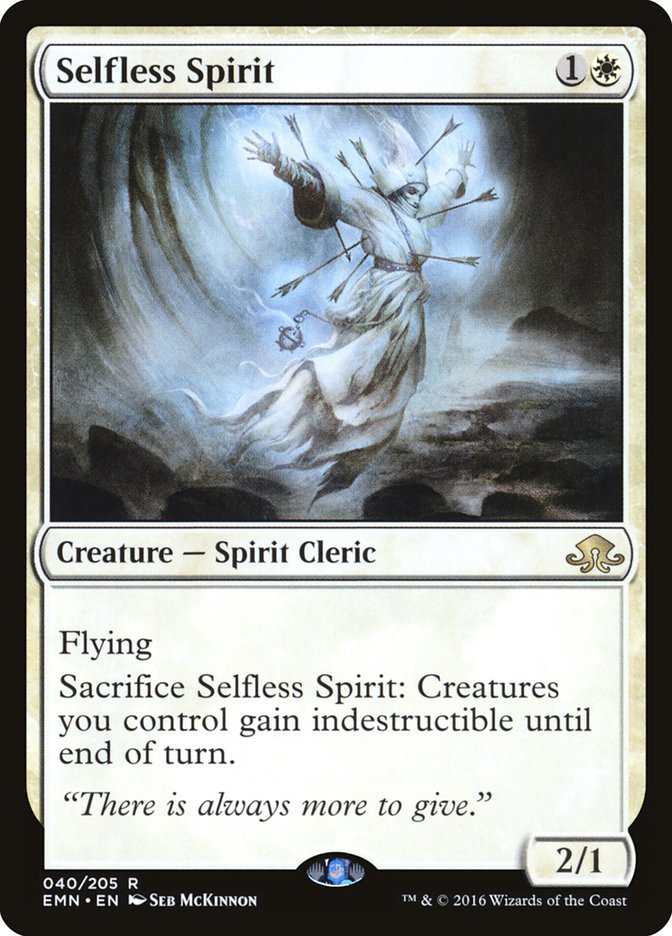This week, I thought I’d try something a little different. Instead of just focusing on one deck and going through all the ins and outs, I thought it would be fun to break down both sides of a matchup between two relatively popular archetypes in Modern. Today we’re delving deep into…
One Matchup: Grixis Death’s Shadow VS. Counters Company
First off, let me start by saying I hope this becomes a regular style of article. I love to analyze both sides of a good matchup between interesting decks, regardless of the format. When playing one side, I tend to do much better when I already know how my opponent is going to sideboard, what cards they have access to, and what cards have the strongest impact on the game. And in this particular matchup, things can sometimes get a little fuzzy.
As the Death’s Shadow player, there are a lot of moving pieces, and it is easy to get lost in the minutiae. At the same time, from the perspective of the Counters Company player, you are often put in undesirable positions by all of Death’s Shadow’s disruptive elements and efficient threats, which in turn will bottleneck many of your decision trees. Navigating through both sides is difficult, which is one of the reasons I picked this particular matchup!
I’m also picking this matchup because it is one where I’m not really sure who’s favored, and many games will come down to who best manages their resources. Of course, it is Modern, and both decks can have a string of unbeatable topdecks, but those games are few and far between.
As the Death’s Shadow player, you’re bound to be put in a position where you can choose between putting another threat onto the battlefield or holding up a piece of disruption. Much like playing against the Splinter Twin decks of old, there are spots where you’ll need to press your advantage in order to avoid moving into the long-game, even if that means potentially dying to their combo. Knowing exactly when you need to apply that additional pressure, as opposed to holding up a removal/counter, is an easy way to get a leg up on the matchup. However, that isn’t really a teachable skill. Every situation is different, and the only way you can figure that out is playing the matchup yourself.
With that said, let’s begin from the side of Death’s Shadow. For reference, we’ll be using Brad Nelson’s winning Grixis Death’s Shadow list from #SCGBALT.
Creatures (16)
Lands (19)
Spells (25)

For starters, the early spot removal spells are pretty great in this particular matchup. You should put an emphasis on killing their mana producing creatures in the first few turns to slow them down. The faster they can cast Collected Company, the more likely you are to lose. Even if they don’t assemble either of their arbitrarily large combos, a couple of Kitchen Finks alongside Vizier of Remedies can be troublesome to attack through. Since we don’t threaten combo kills like the Death’s Shadow decks of old, with Temur Battle Rage and such, we have a tough time bashing through creatures with double lives. And in this regard, Kitchen Finks can be nightmarish in the right spots.
So our primary goal in the first game of this matchup, as the Death’s Shadow player, is to contain their mana and try to pick apart their hand.
Thoughtseize is one of your best spells here, as it can strip them of Collected Company where Inquisition of Kozilek can’t. While Inquisition of Kozilek is still a fine spell in the matchup, as it can take literally every other card in their deck, you’d be surprised as how relevant it is for you to deal yourself two points of damage in the early turns. They don’t put a lot of attack pressure on you before the fourth or fifth turn, which means you are doing yourself the first eight points of damage (or more) in order to cast your first Death’s Shadow.
But disruption isn’t enough to beat these decks. Given enough time, their spells will grind you out of the game. They do play four copies of Eternal Witness, after all. It is important to note here that decks like Death’s Shadow shine when they’re attacking while also connecting with their disruptive elements. In this matchup, it is important to apply that pressure with your delve creatures or Death’s Shadow while hitting their hand and killing their creatures. If you’re spending your first three turns just casting spells that don’t apply pressure to your opponent, don’t expect to come out victorious. While the body on Snapcaster Mage isn’t huge, it can still be important in applying pressure in the early turns while you cast your disruptive elements, though Death’s Shadow or a delve creature is certainly preferable.
As far as what hands to mulligan, I’d say that any hand featuring five lands or zero lands is going to be worthless. Everything else is mostly contextual. In this particular matchup, four lands in your opening hand can be a bit rough, but I do expect games to go long enough that you can get real value out of Snapcaster Mage plus Kolaghan’s Command, or even a Tasigur, the Golden Fang activation. Since so many of your cards cycle, I would be more inclined to keep a mana-light hand rather than a mana-heavy one.
So, to recap:
1) Disruptive elements are significantly better when backed by pressure.
2) Emphasize killing their early mana-producers while you dig for a threat.
3) Keeping an opener without a threat is fine as long as you have a few ways to dig.
4) You’re the aggressor in this matchup. They’re the combo deck. Killing their creatures will only buy you so much time.
Aside from that, there isn’t really all that much to the Death’s Shadow deck on this side of the matchup. That is, until you get to the sideboard.
In:
Out:
I know it might look like we’re sideboarding out too many disruptive elements, but let me assure you that your sideboard cards do some heavy lifting in this matchup. Discard elements become dead draws quickly. And as we talked about before, Inquisition of Kozilek is the worst of the bunch. I’m also not a huge fan of Stubborn Denial in this particular matchup because it doesn’t have a ton of targets. Ultimately, it can stop a Collected Company or Chord of Calling, but I’d much rather focus on killing the stuff they put onto the battlefield than have potentially dead cards in my hand as the game progresses. Their sideboard plan will usually involve a few removal spells to help stifle your aggression, but even then I’m still not sold on needing Stubborn Denial.
Stubborn Denial also incentivizes you to hold up mana each turn. One of the easiest ways to get an edge in this matchup is spending more mana than your opponent. While Stubborn Denial can be the saving grace in the first game, we get access to many more important tools after sideboard that can lock up games on their own. Don’t get blinders on just because you got to hit their Collected Company in the first game with a Stubborn Denial. Them playing around it is almost as valuable as having it in your hand anyway.
At two mana, Terminate is your worst removal spell and gets cut in favor of Collective Brutality. While you’re sideboarding out Inquisition of Kozilek, you’re supplanting it with a piece of removal that can double up on disruption. We just don’t want to overload on any one element. Too much removal and we just start spinning our wheels. Too many threats and we risk dying to their arbitrarily large combos. Too much disruption and we risk drawing the wrong pieces at the wrong time, and losing because of it.
Kozilek’s Return; Liliana, the Last Hope’ and Izzet Staticaster do some heavy lifting in this matchup. All three spells help you contain battlefield states that get overwhelming, which almost always happens if they draw two copies of Kitchen Finks. While Kozilek’s Return is the only one that kills the front side of Kitchen Finks, the other two can clean up the back half after combat/removal while continuously picking off their mana producers or Vizier of Remedies.
These three cards are solid, but keep this in mind: spells that cost three mana in this style of deck have to be nuts to make the cut. While none of these will win you the game on the spot, they pair nicely with your gameplan of containing their creatures and have their fair share of uses across the board. Just be aware that the more three-drop spells you bring in, the slower your deck is going to be. Drawing two different cards that cost three mana might strangle your early development.
Nihil Spellbomb is not overly important here, but it does provide you with some insurance against one of their combos while making their Eternal Witness a bit worse. I don’t expect Nihil Spellbomb to shine, but I do like having a few in my deck after sideboard in case the worst happens. And since the games will likely go long, having it cycle is just icing on the cake. In this matchup, an anti-graveyard card like Grafdigger’s Cage would be ideal because it shuts down both Chord of Calling and Collected Company in addition to their arbitrarily large life combo, but I’m not exactly sure that’s something you want in a Snapcaster Mage deck.
If you see a lot of Counters Company in your local metagame, as well as a heavy Dredge presence, I might recommend trying to find room for one or two copies of Anger of the Gods. While it isn’t as flashy as Kozilek’s Return and the double red can be rough on the mana, exiling creatures deserves recognition. If I were to add two of them into the sideboard, I would likely cut the Kozilek’s Return and one copy of Surgical Extraction, since both Anger of the Gods and Surgical Extraction are fine anti-Dredge cards.
Now let’s go ahead and move on to the Counters Company side of the coin. For reference, we’ll be using Brennan DeCandio’s list from the Top 16 of #SCGBALT.
Creatures (30)
- 4 Birds of Paradise
- 4 Eternal Witness
- 4 Devoted Druid
- 4 Kitchen Finks
- 3 Noble Hierarch
- 1 Viscera Seer
- 1 Scavenging Ooze
- 1 Fiend Hunter
- 2 Duskwatch Recruiter
- 2 Walking Ballista
- 4 Vizier of Remedies
Lands (22)
Spells (8)

While it didn’t quite make the Top 8 of SCG Baltimore, it put up a stellar performance in the Modern portion of the Team Open in Louisville, as well as the Classic on the same weekend. And when a brand-new version of a deck makes that kind of debut in the opening weeks, you start to pay attention. Going into SCG Baltimore, I expected to play against Counters Company more than any other Modern deck. And now, in the aftermath, I wouldn’t expect the middling results from SCG Baltimore to keep this deck down. After all, the archetype is still in its infancy, even if we did have a shell all set and ready to go.
So let’s get down to it.
First off, I just want to say that we’ve seen this song and dance more than once before. First it was Birthing Pod, then Collected Company, and now…still Collected Company. We just have some new tools to work with.
Arbitrarily large mana from two cards that each cost two mana is pretty ridiculous if you ask me, but I don’t think it’s something Modern will have trouble handling. After all, spot removal beats it. That’s what we said about Saheeli Rai and Felidar Guardian, and look how that turned out!
In all sincerity, I think this combination of cards is just slightly too powerful, but I don’t know if I would like to see it get banned. We’ve never really had access to arbitrarily large mana for such a small investment before, so it is hard to judge. I’m going to go out on a limb and say that it won’t be touched anytime soon, but I’ll be keeping my eye on it. At the very least, the existence of such a potent two-card combo should open up the discussion on unbanning some cards that were previously thought to be too strong, like Splinter Twin.
As Modern decks go, this one is pretty basic. Your goal is to set up one of two arbitrarily large combos and hopefully ride that to victory. Sometimes assembling arbitrarily large mana won’t do the trick, while other decks can still beat you once you’ve gained arbitrarily large life. That’s just how Modern is sometimes. But I don’t want to talk down about the strength of either combo, because more often than not you’ll win the game once you’ve put the pieces together. You will almost assuredly have to wade through a ton of disruption and removal from the opponent, but you have the tools to grind through. And today’s matchup of Grixis Death’s Shadow is a key player in Modern that can hit you from multiple angles.
Luckily, Kitchen Finks has your back.
From your side of the battlefield, this matchup is all about time management. In the first game, your primary goal should be to set up one of your two combos, and attacking your opponent should mostly be put on hold. Every time you deal them some damage, that could push them into playing a Death’s Shadow a turn earlier or making their Death’s Shadow attack for lethal after a few turns. While there will be spots where you could end up killing them with a Noble Hierarch-powered Birds of Paradise, those will be few and far between. Your best bet is just focusing on the combo.
Your early mana-producers will likely die to their removal spells, so keeping one-land hands can be rather dangerous. On the draw, it is more acceptable, especially if your hand features more than one mana-producing creature. While they will almost certainly kill your first mana creature, the second one will usually survive. There are two reasons for this: drawing two pieces of removal in the first two turns isn’t easy, and they will have to conserve some of that removal to break up your combos.
Aside from that, finding spots to resolve your Collected Company and Chord of Calling when your opponent is tapped out can be huge. Stubborn Denial shouldn’t play an important role after sideboard, but I would expect many players to keep it in. At the very least, keep it in mind when sequencing all of your spells. After all, it is their only instant-speed card that can stop your instant-speed cards.
While creatures like Kitchen Finks are part of your arbitrarily large life combo, they can also play an important role at making sure you don’t die to a large Death’s Shadow or delve creature. Don’t be afraid to chump block with a Kitchen Finks, but be aware that the life combo no longer works if your Kitchen Finks has a persist counter on it. Vizier of Remedies alongside Kitchen Finks, even without Viscera Seer, is also a potent defense force, since the Kitchen Finks will return to the battlefield fresh as a newborn babe. Just be wary of a removal spell killing your Vizier of Remedies with persist on the stack.
As for what creatures you should be going for with Chord of Calling or Collected Company, that all depends on the situation. If you have an extra Chord of Calling lying around, a single Scavenging Ooze can shut down their Snapcaster Mage, slow down their delve creatures, and even grow larger than a resolved delve creature. Just know that Fatal Push exists and your plan of relying on Scavenging Ooze to get the job done on its own is loose at best. In the same vein, Fiend Hunter can also slow them down, but don’t expect it to survive for very long. With so much deck manipulation and four copies of Snapcaster Mage, none of your important creatures will likely survive for very long.
That’s why it is your job, as the Counters Company player, to brute force your way to victory. Just keep casting Collected Company, Eternal Witness, and Chord of Calling until they run out of resources, and hope that you can find a one-turn window to put the boots to them. While they do have a lot of disruption, they don’t have a ton of card advantage, so you should be able to out-resource them as the game goes longer. After sideboard, your priorities can and should change a little bit, but the plan stays mostly the same.
In:
Out:
Since the game will almost assuredly go longer after sideboarding, I find it necessary to sideboard out a land. The same goes for the Death’s Shadow side as well. Both of you should have access to more cards that interact with each other, which means that flooding out can be a real issue as the game progresses. I briefly considered trimming a Noble Hierarch, but I think you want as many creatures as possible that they will have to consider killing at some point in the game. Plus, any hand that leads on Noble Hierarch or Birds of Paradise is better than a hand that doesn’t.
Path to Exile is a boon for this deck after sideboarding. Not only can it buy you time against an early threat from the opponent, but it can also provide you with a much-needed mana source if they kill one of your creatures. While you don’t see people Path to Exile their own creature all that often, it happens a lot more than you would think in a matchup where one of their primary goals is to contain your early mana development. Hitting your fourth mana source for Collected Company is a big deal.
What you’re sideboarding out isn’t nearly as important as what you’re leaving in. For reference, two copies of both Duskwatch Recruiter and Walking Ballista aren’t all that necessary. It can be nice to draw one or the other once you’ve assemble arbitrarily large mana, but it isn’t too difficult to win by just casting a bunch of free spells like Collected Company and Eternal Witness. I do like keeping one of each to end the game on the spot if you have a Chord of Calling, though.
As we discussed before, the Fiend Hunter isn’t all that impressive here. While it can break up an opponent’s Counters Company combo or pick off an annoying threat for a turn or two, the sideboard games should play out much differently from the pre-sideboard games. They’ll likely have access to more removal and even some sweeper effects, so stalling out one of their big threats for a turn isn’t that important. What is important is killing it outright with Path to Exile or Big Game Hunter.
I do like Selfless Spirit because it is another must-kill creature as it protects your combo. Naturally drawing it is fine, where naturally drawing any of the cards you’re taking out is pretty terrible. While Scavenging Ooze usually requires a removal spell, it isn’t reliable, and it can’t protect you while you’re trying to assemble your combos. While I don’t know if it is the worst creature to have in the deck after sideboarding, I think you want all your other cards more.
Abrupt Decay is definitely a tough card to figure out in this matchup. On the one hand, it can kill Death’s Shadow, and other annoyances like Liliana, the Last Hope or Izzet Staticaster. On the other hand, it doesn’t deal with the big delve creatures. My gut tells me to leave it on the sidelines, but if you feel like you need it I wouldn’t blame you. After all, a single sideboard card from the opponent can change the texture of the matchup entirely.
Closing Arguments
Counters Company:
Counters Company is a new deck that many opponents might not be familiar with playing against. Assembling arbitrarily large combos at instant speed can throw many players for a loop. You can do some disgusting stuff with the Counters Company deck, and I wouldn’t be surprised to see a revamped version of this deck take Modern by storm in the coming months. As of right now, I don’t think it plays a good enough non-combo game. Older variations on the deck could win through combat and would often do so more than actually combo-killing the opponent. With this version, I just don’t see that happening very often.
But both arbitrarily large combos in the deck are so potent that I don’t even know if that matters. Generating arbitrarily large mana for such a small investment, and with a card that straight-up replaces Melira, Sylvok Outcast to boot, is something special and one of the reasons I have Counters Company as a major player in the current Modern format.
While this deck might not necessarily be favored in this matchup, it has the tools to dismantle virtually any deck in the format. Grixis Death’s Shadow is a strong contender for “Best Deck” in Modern, and I would think myself foolish for playing anything else in the near future. Death’s Shadow does a great job of playing spells that keep pace with the opponent at half the cost. While you’re more vulnerable to stuff like Chalice of the Void, I find the efficiency far outweighs the dangers.
It is so easy to enable Death’s Shadow that it amazes me that it took so long to be noticed. I mean, the deck arguably got better after they banned Gitaxian Probe because we had to actually work to make it great. With Modern being the way it is, with so many people playing so many different archetypes, having a deck like Death’s Shadow around is important. Otherwise, we’re all just shooting in the dark. Before Death’s Shadow, Splinter Twin was that deck. Now that Splinter Twin is no more, Death’s Shadow filled the power vacuum. Having a fair deck be the “Best Deck” in a given format is not a bad thing, and having tough games where both players are constantly interacting is important for the health of a format, even if one is grossly under-costed.
Both of these decks are bending the rules a bit, but I’m fine with it. Neither feels overly oppressive, but assembling arbitrarily large mana or casting a one-mana 8/8 just feels like you’re getting away with something. The new face of Modern after the banning of Gitaxian Probe and Golgari Grave-Troll is something I can get used to, even if nothing really changed except for how we approached deckbuilding with Death’s Shadow.
It will be interesting to see what happens in Modern over the next few months. If Death’s Shadow continues to come out on top, I might be forced change my tune, but right now I’m very happy about where Modern is and where it’s going.





